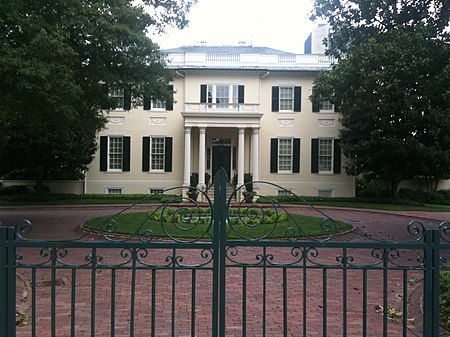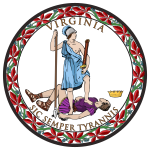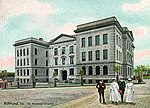Executive Mansion (Virginia)

The Virginia Governor's Mansion, better known as the Executive Mansion, is located in Richmond, Virginia, on Capitol Square and serves as the official residence of the governor of the Commonwealth of Virginia. Designed by Alexander Parris, it is the oldest occupied governor's mansion in the United States. It has served as the home of Virginia governors and their families since 1813. This mansion is both a Virginia and a National Historic Landmark, and has had a number of successive renovations and expansions during the 20th century. Adjacent and immediately north of Capitol Square is the Court End neighborhood, which houses the White House of the Confederacy. During the Civil War, the Virginia State Capitol, also in Richmond, housed offices of the Confederacy. Tours of the mansion are offered several days a week.
Excerpt from the Wikipedia article Executive Mansion (Virginia) (License: CC BY-SA 3.0, Authors, Images).Executive Mansion (Virginia)
Capitol Square, Richmond Shockoe Slip
Geographical coordinates (GPS) Address Nearby Places Show on map
Geographical coordinates (GPS)
| Latitude | Longitude |
|---|---|
| N 37.538611111111 ° | E -77.4325 ° |
Address
Virginia Civil Rights Memorial
Capitol Square
23298 Richmond, Shockoe Slip
Virginia, United States
Open on Google Maps











